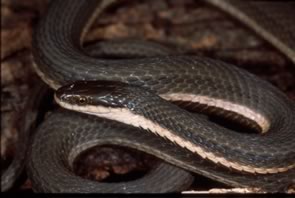
Regina septemvittata
Photo by Eric Stine
Description: Queen snakes are medium-sized watersnakes characterized by a gray or olive-brown back with one light stripe on each side. They sometimes have three faint dark stripes running the length of the backs. Queen snakes’ bellies are usually cream colored with two thin longitudinal brown stripes. Their scales are rough (keeled).
Feeding/Diet: Queen snakes eat primarily soft-shelled (i.e., molting) crayfish, though they may sometimes take other prey.
Habitat/Range: They are found along rocky streams and small rivers and are most abundant in the mountains. Queen snakes can often be found in areas where low tree limbs overhang the water, into which they drop if disturbed. They are most active during the daytime, but may move about at night, especially during hot weather.
Reproduction: They breed in the spring and give birth to 5–23 young between July and September. The young look like miniatures of their parents, although they are usually more boldly marked.
Miscellaneous: If captured, the queen snake usually writhes around vigorously and expels musk. Queen snakes rarely bite, although some individuals may nip at their captor if roughly handled.
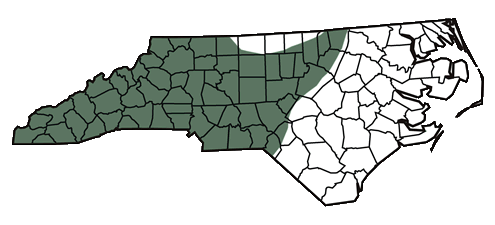
The shaded region represents the range of the queen snake in North Carolina.
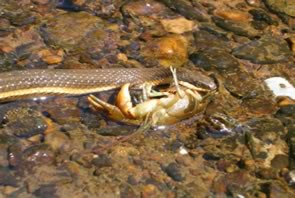
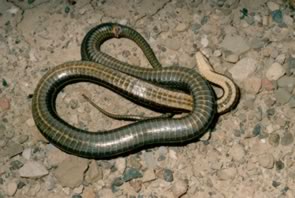
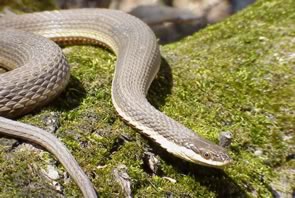
Photo by Sarah Meyer
The belly of a queen snake.
Photo
by RW Van Devender
Photo by ME Dorcas



This website created by: J. Willson, Y. Kornilev, W. Anderson, G. Connette and E. Eskew.
For comments or questions contact M. Dorcas: midorcas@davidson.edu.
M. Dorcas homepage: http://bio.davidson.edu/dorcas
Davidson College, Davidson, North Carolina 28035-1719.
Text and maps from: Dorcas, M. E. 2004. A Guide to the Snakes of North Carolina. Davidson College - Herpetology Laboratory, Davidson, NC. – Copyright by Michael E. Dorcas.
Partial Funding for this website provided by a Associate Colleges of the South, National Science Foundation, and Duke Energy.
